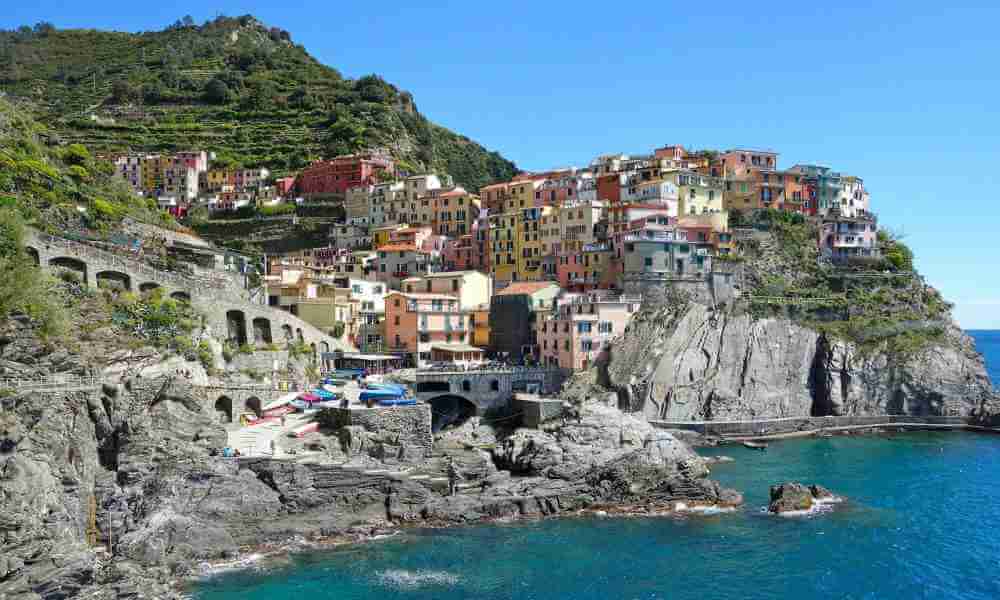Destination positioning means creating a specific impression a few tourist spot within the minds of the tourist. Advertising features a major role in creating destination positioning for a specific tourist spot. When destination positioning is completed correctly with right advertising practices, it’ll definitely usher in more tourists to the target tourist destination.
Spiritual people would like to visit temples. people that like adventure would like to visit waterfalls, water sports, trekking destinations and more. Health conscious people would really like to go to spas, etc. When people get what they need during a tourist place, they’re going to want to return back. they’re going to refer their friends. this may cause a rise within the numbers of individuals visiting the place. this may improve the profits for the companies operating within the target tourist spot.

Why destination positioning is required
There are different tourist destinations offering similar tourism value. However, one place are going to be more appealing than the opposite to the potential customer. for instance , allow us to consider two tourist places. Both of them offer water sports. These two tourist spots are competing with one another to draw in an equivalent customer.
The tourist spot that provides a dominative and attractive reason to the typical customer will attract more clients. The client shouldn’t be ready to say no to the offer. This special reason will give the business an whip hand in comparison to its competitor. This special reason should be communicated to the customer during a way the customer will develop a soft corner for this place. Creating this special place within the mind of the customer is named destination positioning.
Destination positioning is completed after choosing the target market. within the market segmentation process, you select to draw in a selected age bracket or people with similar interest. Example, you are trying to draw in people trying to find economic yet hygienic stay otherwise you attempt to attract people that love water sports etc.
After choosing your marketing segment, you create the advertising decide to create the specified destination positioning within the minds of the top customer. once you create the special impression within the minds of your target customer, you’ll be enjoying their business quite your competitor. When customers are deciding between two tourism spots offering the similar entertainment, they choose the one that’s more attractive. We are getting to discuss the importance of “destination positioning” in tourism. There are different methods to doing this. we’ve to recollect that we aren’t trying to make a false positive image within the customer’s mind. to make a real competitive edge, the positioning should be true and useful to the top customer. Our aim is to explore tourism marketing methods which will help create a real and meaningful impression about the place within the minds of a customer.
Positioning may be a difficult process, which may be done only after careful analysis of the features and benefits of the services and products offered by the tourist destination. These attributes should be compared to what the top customer will need and need . What
is offered by the business and what’s required by the customer should be matched to device the top positioning strategy for the business.
The tourism destination with a sensible positioning strategy are going to be ready to directly compete with a stronger competitor. for instance , a tourism destination that’s located very distant from the notice of tourists are going to be ready to compete with a tourism destination that’s very near and documented to visitors. With a transparent positioning strategy, it’s possible to push a tourism destination from being an unknown destination to a known destination.
When a billboard is being sent, the target client should know that the message is being sent to them; however, if the target market doesn’t recognize that the message is being sent to them, then the destination positioning message won’t work. This happens when the destination positioning strategy tries to be everything to everyone. The tourism destination loses its identity. Target customers won’t be ready to identify with its special identity. This destination won’t clear the customer demand. this may eventually create a negative impression within the customers mind.
Effective Positioning
Effective Positioning is feasible only a product or service will solve the matter of the customer. it’s to clear the requirements and wishes of individuals and it’s to supply some benefits. once you are positioning a product or service, your positioning advertisement should promise to deliver to a selected need or want of a customer. If the standard of the benefit, that you simply are promising is best than that of your competitor, you’ll get a far better positioning advantage. At least, it should be similar in quality to what your competitor is already offering.
Positioning should be supported the most concept of the tourist destination. From the most concept, the remainder of the activities of the tourist destination should be administered . When the most concept is single mindedly and properly targeted, it’ll be positively helpful, during a way affecting everything that the organization stands for.
This will be useful for the advertising process. Also, this may be useful altogether the further business promotions of the corporate .
Positioning plays a crucial role in affecting the procedures, policies, customer relationship, attitudes of the workers , handling of complaints, and a variety of other details that contributes to the tourism experience during a specific destination.
The competition between tourist destinations doesn’t only dwell creating excellent destination positioning statements, but in delivering the service promised during a consistent manner.
The positioning statement should express the very fact that the promise are going to be consistently delivered.

Market Positioning
The first step involved in market positioning is to spot and to pick the market segment that features a business potential. this is often important to spot the parameters for competitive success for that specific market segment.
To identify the business potential of a market segment, the wants, needs, and perceptions of the target market should be taken in to consideration. this could be combined with the advantages offered by the destination. a couple of important questions should be answered to spot this:
How does the target market perceive the destination?
How does the target market perceive the competition?
What characteristic element or attribute should a destination use to differentiate itself so as to form the simplest use of its limited resource?
regardless of how well you advertise, if the target market doesn’t perceive the image, then the image simply doesn’t exist.
If the target market doesn’t consider what a selected destination has got to offer may be a benefit, then it’s not a benefit.
If the target market doesn’t believe that the benefit are often delivered, then the guarantees are meaningless.
If the benefit that you simply are offering isn’t important to the market, then it’s not a benefit.
If the target doesn’t believe that the benefit offered is different from that of the competition, then the differentiation has not succeeded.
Images benefits and differentiation doesn’t matter if the tourist cannot identify or perceive it to be important. The perceptions of the tourism officials and therefore the tourism marketers simply don’t matter.
Objective Positioning- Objective positioning refers to the tangible, real or physical attributes.
Subjective positioning – Subjective positioning focuses on intangible aspect (Bowie & Buttle, 2013).
Positioning Techniques
Positioned by Price Value
International destinations aren’t positioned by making use of price because the basis because low prices will compare to inferiority . However, the worth that’s being offered are often used effectively like “Malaysia gives more natural value.” during this positioning statement, Malaysia will appear appealing not only to the sense useful for money, but also for its natural attractions.
Positioning With reference to Use of Application
The reasons for visiting an area become a serious reason for positioning a destination. Bermuda positions itself targeting the American Meeting Market with the statement
“Sometimes you’ve got to go away the country to urge your work done.” This statement promises productive market during a relaxed environment. Cancun, Mexico features a position statement like “The forum for sun worshipers.”
Positioning consistent with the users or class of users
Positioning statements which defines the category of users who should be visiting with a selected place may be a method. Hong Kong is positioned as an incentive travel market. they need a press release like When they’ve reached the highest , send them to the height ,” pertaining to Victoria Peak, a serious tourist site in Hong Kong . Fisher Island, a luxury residential development in Florida, positions itself with a press release , “Where people that run things can stop running.”
Positioning with reference to a product class
Associating a destination with unique and extraordinary experiences is one method of positioning.
For example:
the individuality of Monaco is positioned as “The fairy tale that doesn’t end in the dark .”
Holding a convention in Thailand is positioned as “Smooth as silk where the sky is the limit.”
For Israel the statement is, “If you’re trying to find a perfect forum , here’s one that’s on the brink of heaven.”
Positioning vis-a-vis the competition
Some positioning statements are going to be made during a thanks to meet with the competition head on. This becomes important to bring out the differences between destinations. Making use of this approach is avoided in international tourism because this will cause having to form negative statements about another country or region.
Positioning statements also can be testimonials from previous visitors and tour operators who can actually make an immediate appeal to the target market. Since, inspiring experiences is an intangible construct the positioning statement should use words that specify the sensation . Positioning may be a powerful weapon in niche marketing.



